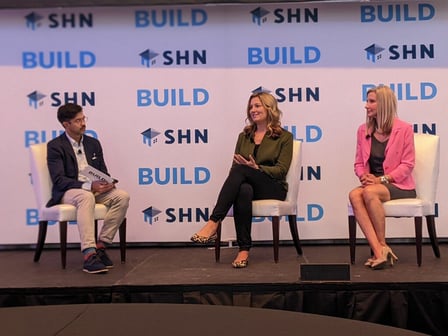 I had an opportunity to speak as a panelist at the Senior Housing News BUILD conference in Orlando, Florida. The panel was hosted by our good friends at NuStep who have similarly been supporting fitness in the senior living space for decades with some of our favorite equipment. Those in attendance were architects, developers, and designers looking to the future with both renovations and new construction. The panel was on one of my favorite topics – the business case for quality fitness programs in senior living communities. The audience very well could have been marketing and operations executives as the discussion equally applied to all visionaries in the senior living landscape who recognize the demands of their consumers…finding a community that can help them live well.
I had an opportunity to speak as a panelist at the Senior Housing News BUILD conference in Orlando, Florida. The panel was hosted by our good friends at NuStep who have similarly been supporting fitness in the senior living space for decades with some of our favorite equipment. Those in attendance were architects, developers, and designers looking to the future with both renovations and new construction. The panel was on one of my favorite topics – the business case for quality fitness programs in senior living communities. The audience very well could have been marketing and operations executives as the discussion equally applied to all visionaries in the senior living landscape who recognize the demands of their consumers…finding a community that can help them live well.
The design of your fitness amenities 100% matters. Choosing the right equipment is crucial for the safety and success of your residents and there were great insights shared.
These are just a few of the questions posed by the audience and moderator:
- How do you get started in a fitness center design project?
- How do you choose equipment that meets the needs of current residents while appealing to future consumers?
- How can you enhance your fitness center when financing is a challenge for renovations or new construction?
- How are you seeing lifeplan communities support resident wellness through the continuums of care?
Time and time again, our expert moderator Tim Mullaney would ask a question of myself, and co-panelist Annie Shaffer from Sunnyside Retirement Community and we found ourselves speaking to quality staffing being a significant part of the solution to these questions. Do you want to check the box that you have a fitness center or do you want your residents and prospects to feel the energy in a fitness program that is a hub of activity and heartbeat of your community?
When we spoke to getting started with a design project, we began with defining your vision. You wouldn’t open a new dining venue without a vision for the resident experience in that space. What food would be on the menu? What level of hospitality and service would residents experience in that space to keep them highly satisfied? The same is true for the fitness center and a calendar of group fitness classes is not enough. Defining your vision and designing a space around the desired resident experience is a significant piece of the solution to these questions noted above and you need quality fitness staff to evolve your program with resident input and preferences.
What is your community’s vision and how are your showcasing it to create distinction in your marketplace? Don’t go at it alone. Make sure you find a partner who is experienced in developing quality fitness programs and not just selling you equipment. You need that operator perspective to design not only the space, but a program that truly serves your residents.
Learn how NIFS expertise generates a 63% increase in resident engagement in our client fitness centers.

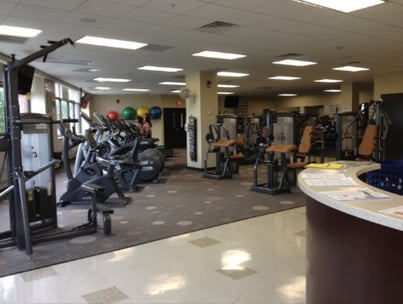 This has been the year of design and consulting work for senior living clients who are renovating or building new fitness centers. I think I could give you the dimensions of a NuStep T4r model in my sleep (they are 60 x 27 x 24 inches, by the way). It truly is exciting to see the industry dedicating resources to well-designed fitness spaces to support quality programs and services for residents.
This has been the year of design and consulting work for senior living clients who are renovating or building new fitness centers. I think I could give you the dimensions of a NuStep T4r model in my sleep (they are 60 x 27 x 24 inches, by the way). It truly is exciting to see the industry dedicating resources to well-designed fitness spaces to support quality programs and services for residents.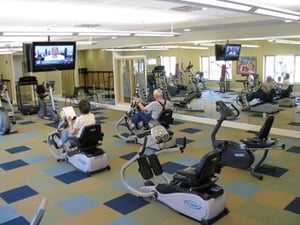 Televisions and entertainment: Determine whether you will pursue wall-mount televisions or the integrated console option on the cardio machines. With some equipment like NuSteps and rowers not having the integrated TV option, you will want a wall-mount TV somewhere in your facility. With wall-mount TVs you’ll have to navigate the channel wars for the lifelong battle between Fox News, CNN, and MSNBC, which individuals have VERY strong preferences for—imagine that! Consider an FM tuner option with headphones if needed, but we generally see residents politely following the first-come, first-served rule.
Televisions and entertainment: Determine whether you will pursue wall-mount televisions or the integrated console option on the cardio machines. With some equipment like NuSteps and rowers not having the integrated TV option, you will want a wall-mount TV somewhere in your facility. With wall-mount TVs you’ll have to navigate the channel wars for the lifelong battle between Fox News, CNN, and MSNBC, which individuals have VERY strong preferences for—imagine that! Consider an FM tuner option with headphones if needed, but we generally see residents politely following the first-come, first-served rule.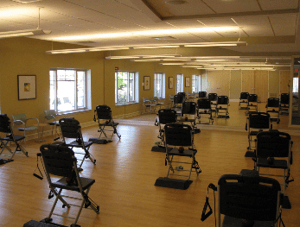 Exercise chairs: We are big fans of the
Exercise chairs: We are big fans of the 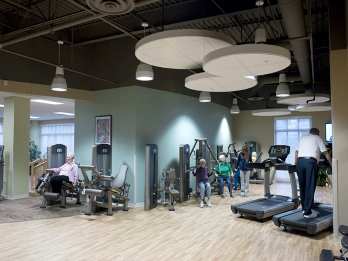 Picture this: You are 78 years old touring a senior living community with the marketing and sales coordinator. They take you to the ground floor or basement of the building and they flip on the lights of the uninhabited fitness center. It has painted cinderblock walls, fluorescent lights, no windows, and a hodgepodge of equipment. It feels deserted and you wonder how active the community is.
Picture this: You are 78 years old touring a senior living community with the marketing and sales coordinator. They take you to the ground floor or basement of the building and they flip on the lights of the uninhabited fitness center. It has painted cinderblock walls, fluorescent lights, no windows, and a hodgepodge of equipment. It feels deserted and you wonder how active the community is.
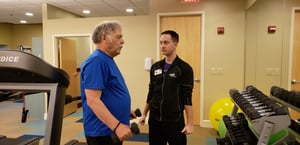 From group fitness instructors, to personal trainers, to fitness managers, finding the right people is at the heart of what we do, and our interview and vetting process helps us find the best of the best. If you are looking for support in recognizing fitness qualifications and making the right hire for your community, NIFS can lead your interview process. We can also aid in the training process once you make your hire to get your new team member on the right path and connected to NIFS resources and programming materials.
From group fitness instructors, to personal trainers, to fitness managers, finding the right people is at the heart of what we do, and our interview and vetting process helps us find the best of the best. If you are looking for support in recognizing fitness qualifications and making the right hire for your community, NIFS can lead your interview process. We can also aid in the training process once you make your hire to get your new team member on the right path and connected to NIFS resources and programming materials.
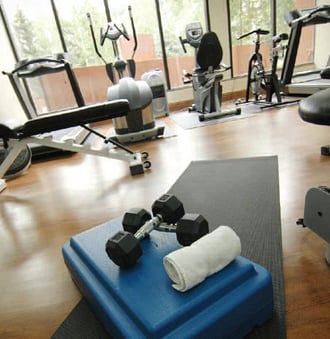 When a business makes the commitment to put in a corporate fitness center, they are making a statement (hopefully one of many) about how important their employees’ health is. It’s a substantial investment, and the project is not to be taken lightly.
When a business makes the commitment to put in a corporate fitness center, they are making a statement (hopefully one of many) about how important their employees’ health is. It’s a substantial investment, and the project is not to be taken lightly. 